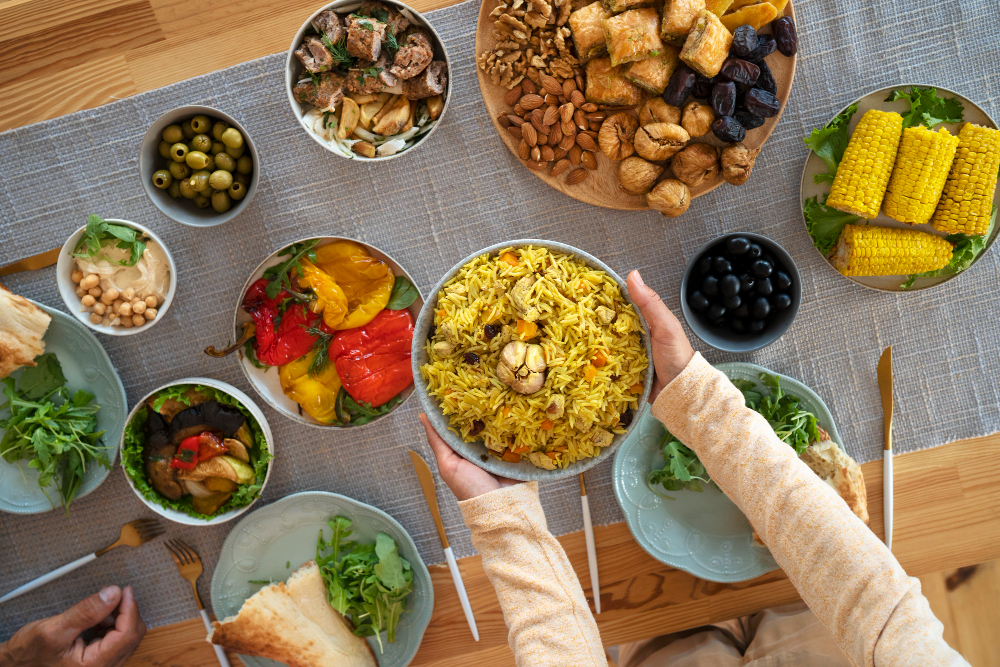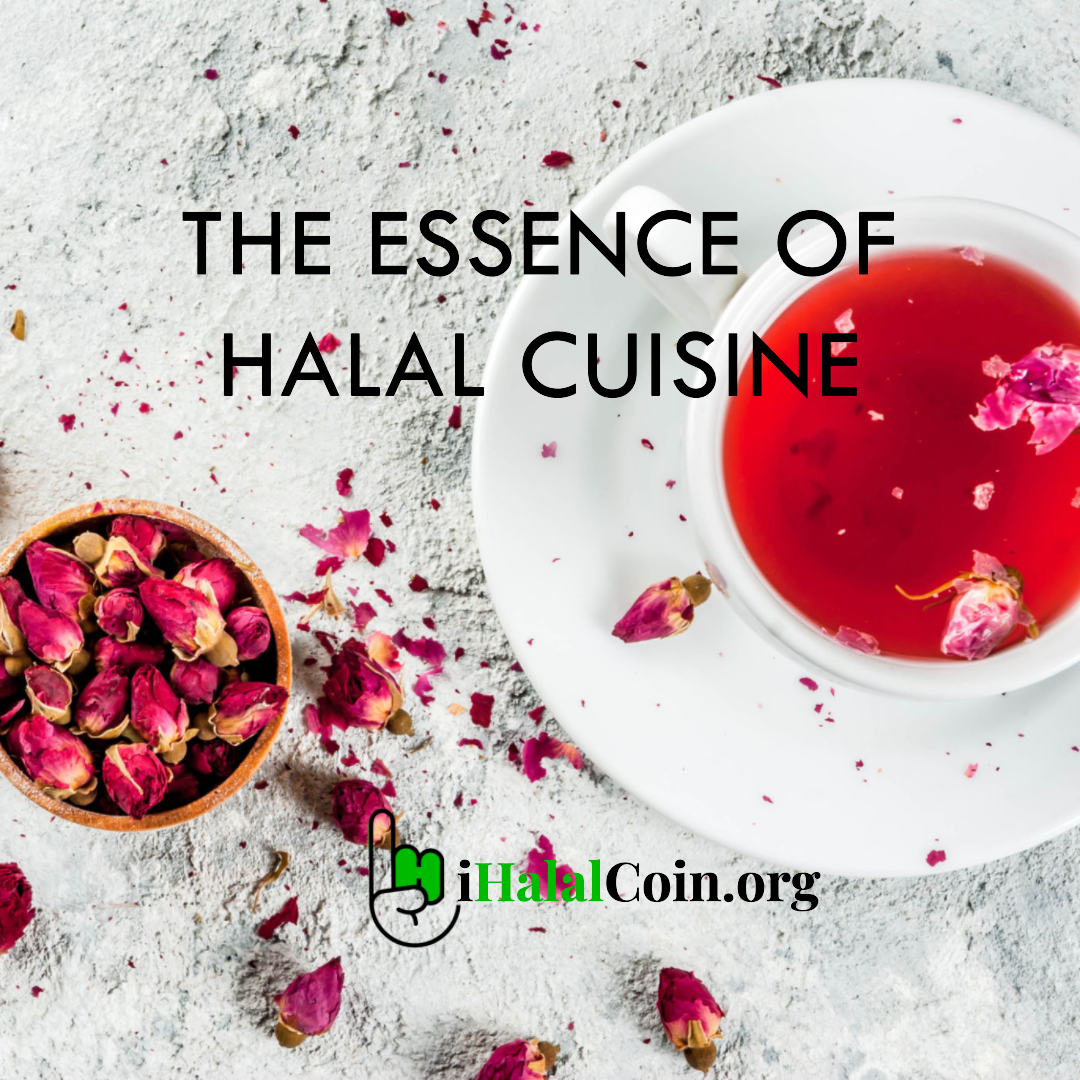In the grand symphony of global cuisine, there’s a melody that resonates with a unique rhythm, a harmony that echoes with a distinct flavor. It’s the melody of Halal cuisine, a culinary tradition steeped in the rich tapestry of Islamic faith [1]. But this melody is more than just a series of notes; it’s a symphony that tells a story, a story of faith, tradition, and culinary excellence. So, let’s tune in to this melody and take a closer look at the essence of Halal cuisine.
Understanding Halal
In the lexicon of Islamic faith, ‘Halal’ holds a place of reverence. It’s a term that signifies purity, a badge of honor that marks the sanctity of food and beverages. But Halal is more than just a label; it’s a testament to the culinary practices that uphold the principles of Islamic faith [2]. From the sourcing of ingredients to the method of preparation, every aspect of Halal cuisine is a reflection of these principles.
History and Origins of Halal Cuisine
The roots of Halal cuisine can be traced back to the dawn of Islamic civilization, a time when the principles of Halal were laid down in the Holy Quran [3]. These principles have shaped the culinary traditions of the Muslim community, creating a unique culinary identity that resonates with the rhythm of faith and tradition. From the aromatic biryanis of the Indian subcontinent to the succulent kebabs of the Middle East, each dish is a testament to the rich culinary heritage of Halal cuisine.
The evolution of Halal cuisine is a journey that spans centuries, a journey that has seen the fusion of culinary traditions and the emergence of new flavors. Today, Halal cuisine is a global phenomenon, a culinary tradition that has found a home in the hearts and kitchens of people around the world [4].
Halal Food Preparation and Certification
The preparation of Halal food is a process that embodies the principles of purity and cleanliness. It’s a process that begins with the sourcing of ingredients and ends with the serving of the dish. Each step of this process is guided by the principles of Halal, ensuring that the food adheres to the dietary laws of Islam [5].
The certification of Halal food is a testament to its purity and compliance with Islamic dietary laws. It’s a seal of approval that assures consumers of the quality and authenticity of the food. In a world where food safety and quality are of paramount importance, Halal certification plays a crucial role in ensuring consumer trust and confidence [6].
Cultural Significance of Halal Cuisine
Halal cuisine is a culinary tapestry that reflects the cultural diversity of the Muslim community. Each dish is a culinary masterpiece that tells a story, a story that echoes with the traditions, values, and customs of its homeland. From the spicy curries of India to the flavorful tagines of Morocco, Halal cuisine is a celebration of cultural diversity and culinary excellence [7].
The cultural significance of Halal cuisine extends beyond the boundaries of the Muslim community. Today, Halal cuisine is enjoyed by people of all faiths and cultures, a testament to its universal appeal and culinary excellence. It’s a culinary tradition that fosters cultural exchange and promotes mutual understanding [8].

Halal Cuisine in the Modern World
In the global culinary landscape, Halal cuisine has carved a niche for itself. From the bustling streets of Istanbul to the cosmopolitan cities of the West, Halal cuisine has found a home away from home. The ethical and healthy attributes of Halal food have struck a chord with the global audience, transcending the boundaries of faith and culture [9].
The advent of the digital age has revolutionized the world of Halal cuisine. From online Halal food delivery services to digital Halal certification, technology has played a pivotal role in making Halal cuisine accessible to a global audience. Today, Halal cuisine is not just a culinary tradition; it’s a global phenomenon that celebrates the diversity and unity of the human race [10].
Conclusion
The essence of Halal cuisine is a melody that resonates with the rhythm of faith, tradition, and culinary excellence. It’s a symphony that celebrates the diversity of cultures, the sanctity of faith, and the joy of gastronomy. As we savor the flavors of Halal cuisine, we are not just tasting a dish; we are experiencing a culinary tradition that has stood the test of time [11]. So, let’s continue to explore this culinary symphony, for every note brings with it a flavor, a flavor that tells a story, a story of the essence of Halal cuisine.
References:
- [1] Understanding Halal
- [2] The Concept of Halal Tourism: Between Business or Islamication Process?
- [3] Halal Food on Japanese Cuisine Through Omotenashi Culture
- [4] Halal Tourism Research
- [5] The halal frontier
- [6] Halal culinary and tourism marketing strategies on government websites: A preliminary analysis
- [7] Understanding Halal
- [8] The Concept of Halal Tourism: Between Business or Islamication Process?
- [9] Halal Food on Japanese Cuisine Through Omotenashi Culture
- [10] Halal Tourism Research
- [11] The halal frontier

